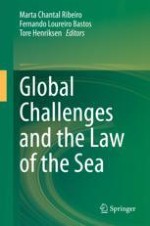2020 | OriginalPaper | Chapter
21. The EU and the UN Legally-Binding Instrument on the Areas Beyond National Jurisdiction
Author : Luigimaria Riccardi
Published in: Global Challenges and the Law of the Sea
Publisher: Springer International Publishing
Activate our intelligent search to find suitable subject content or patents.
Select sections of text to find matching patents with Artificial Intelligence. powered by
Select sections of text to find additional relevant content using AI-assisted search. powered by
